Five Amazing European Painters You Should Know
Art has a remarkable ability to transcend time, culture, and even language, and when we look at the masterpieces created by European painters, we see a rich tapestry of creativity and emotion. This article explores five influential European painters, highlighting their unique styles, significant contributions to the art world, and the lasting impact they have had on both contemporary and historical art. From the swirling skies of Vincent van Gogh to the serene landscapes of Claude Monet, each artist brings a distinct voice that continues to resonate with audiences today. So, let’s dive into the lives and works of these extraordinary talents!
Vincent van Gogh, a post-impressionist painter, is renowned for his vivid colors and emotional depth. His tumultuous life and prolific output have made him a symbol of artistic genius and passion. Van Gogh's paintings are often characterized by bold brush strokes and vibrant hues, which convey a sense of urgency and emotion. One of his most famous works, The Starry Night, captures the swirling night sky over a quiet town, evoking feelings of wonder and introspection. Despite struggling with mental health issues throughout his life, his art remains a testament to the beauty of expression and the power of creativity.
Claude Monet, a founder of Impressionism, revolutionized landscape painting with his innovative use of light and color. His works capture the beauty of nature in a way that evokes emotion and tranquility. Monet's paintings often depict scenes of gardens, water lilies, and the changing effects of light throughout the day. One of his most iconic series, Water Lilies, showcases his ability to render reflections and the ephemeral quality of nature. By focusing on the play of light rather than the details of the subject, Monet invites viewers to experience the world in a fresh and vibrant way.
Pablo Picasso, a Spanish painter and sculptor, is known for co-founding the Cubist movement. His groundbreaking styles and diverse techniques have left an indelible mark on modern art and culture. Picasso's ability to deconstruct forms and represent multiple viewpoints in a single composition challenged traditional artistic conventions. Works like Les Demoiselles d'Avignon and Guernica are not just visually striking but also carry profound social and political messages. Through his art, Picasso explored themes of identity, war, and the human experience, making him one of the most influential artists of the 20th century.
Rembrandt van Rijn, a Dutch master, is celebrated for his extraordinary skill in capturing human emotion and light. His portraits and biblical scenes remain timeless, showcasing his mastery of chiaroscuro—the contrast between light and shadow. Rembrandt's ability to convey depth and personality in his subjects is unparalleled, as seen in works like The Night Watch and Self-Portrait with Two Circles. His paintings invite viewers to connect with the characters, making them feel as if they are part of the story being told. Rembrandt's legacy continues to influence artists and art lovers alike, reminding us of the power of human connection through art.
Georgia O'Keeffe, an American painter influenced by European styles, is famous for her large-scale flower paintings and desert landscapes. Her work embodies a unique blend of abstraction and realism that continues to inspire. O'Keeffe's bold use of color and form captures the essence of her subjects, transforming ordinary flowers into monumental works of art. Through pieces like Black Iris III and Sky Above Clouds IV, she invites viewers to see the beauty in the details of nature, encouraging a deeper appreciation for the world around us.
- Who are the most famous European painters? Some of the most famous European painters include Vincent van Gogh, Claude Monet, Pablo Picasso, Rembrandt van Rijn, and Georgia O'Keeffe.
- What is Impressionism? Impressionism is an art movement characterized by a focus on light and color, often depicting scenes from everyday life and nature.
- What techniques did Pablo Picasso use? Picasso is known for his use of Cubism, where he broke down objects into geometric shapes and represented multiple perspectives within a single painting.
- Why is Rembrandt considered a master? Rembrandt is celebrated for his exceptional ability to capture human emotion and his innovative use of light and shadow in his paintings.
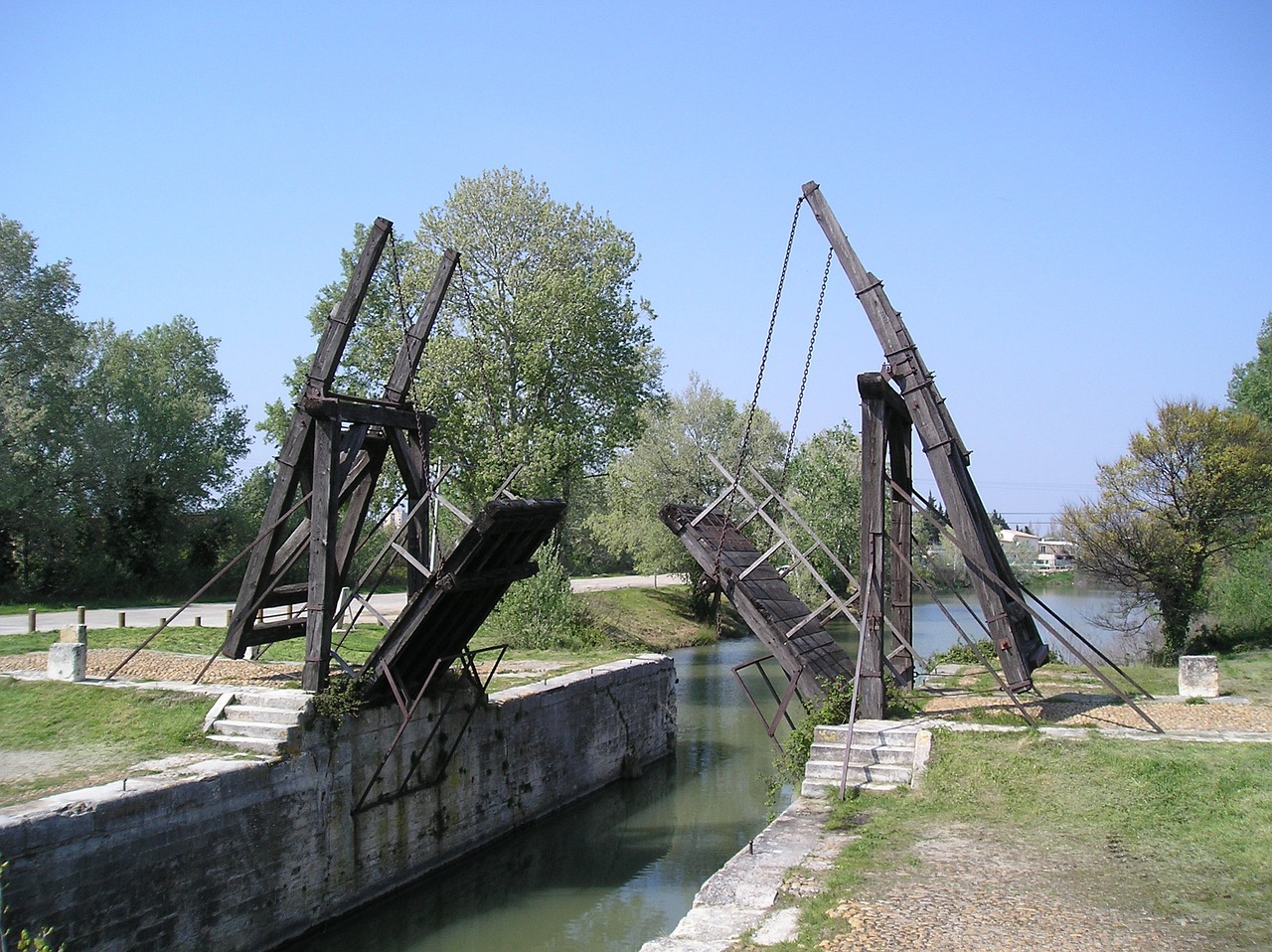
1. Vincent van Gogh
Vincent van Gogh, a name that resonates with passion and turmoil, was a post-impressionist painter whose work has become synonymous with artistic brilliance. Born in the Netherlands in 1853, van Gogh's life was marked by a relentless pursuit of creativity that was often overshadowed by his struggles with mental health. His unique style, characterized by bold colors and expressive brushwork, allows viewers to experience the emotional intensity behind each piece. Can you imagine stepping into a world where colors scream and emotions dance? That’s the magic of van Gogh’s art!
One of the most fascinating aspects of van Gogh's work is his ability to convey deep feelings through color alone. He believed that color could communicate emotions more effectively than words. For instance, in his iconic painting The Starry Night, the swirling blues and yellows create a sense of movement and emotion that pulls you right into the night sky. This painting, created during his time at the asylum in Saint-Rémy-de-Provence, reflects not just the beauty of the night but also his inner turmoil.
Van Gogh's journey as an artist was not an easy one. He produced over 2,100 artworks in just over a decade, yet he sold only one painting during his lifetime. This is a stark reminder of how the world often overlooks true talent. His most prolific period was between 1886 and 1890, where he experimented with various styles and subjects, from self-portraits to landscapes and still lifes. Here’s a brief look at some of his most famous works:
| Painting | Year | Style |
|---|---|---|
| The Starry Night | 1889 | Post-Impressionism |
| Sunflowers | 1888 | Still Life |
| The Bedroom | 1888 | Post-Impressionism |
| Self-Portrait with Bandaged Ear | 1889 | Post-Impressionism |
Despite his struggles, van Gogh’s legacy has endured and flourished. His influence can be seen in countless artists who followed, inspiring movements such as Expressionism and Fauvism. His ability to express the depths of human emotion through his art is a testament to the power of creativity. Imagine walking through a gallery filled with his works; each painting tells a story, whispers a feeling, and invites you to connect with the artist in a profound way.
In conclusion, Vincent van Gogh is not just a painter; he is a symbol of the relentless spirit of creativity. His life and work remind us that beauty often arises from chaos and that art can be a powerful means of expression. So, the next time you gaze at one of his masterpieces, take a moment to appreciate the passion and pain that flowed from his brush. It’s not just paint on canvas; it’s a glimpse into the soul of a true artist.
- What was Vincent van Gogh's most famous painting?
The Starry Night is widely regarded as his most famous work, showcasing his unique style and emotional depth.
- Did Vincent van Gogh sell many paintings during his lifetime?
Surprisingly, he only sold one painting while he was alive, despite creating over 2,100 artworks.
- What influenced van Gogh's style?
His experiences, emotional struggles, and the Impressionist movement heavily influenced his distinctive style.
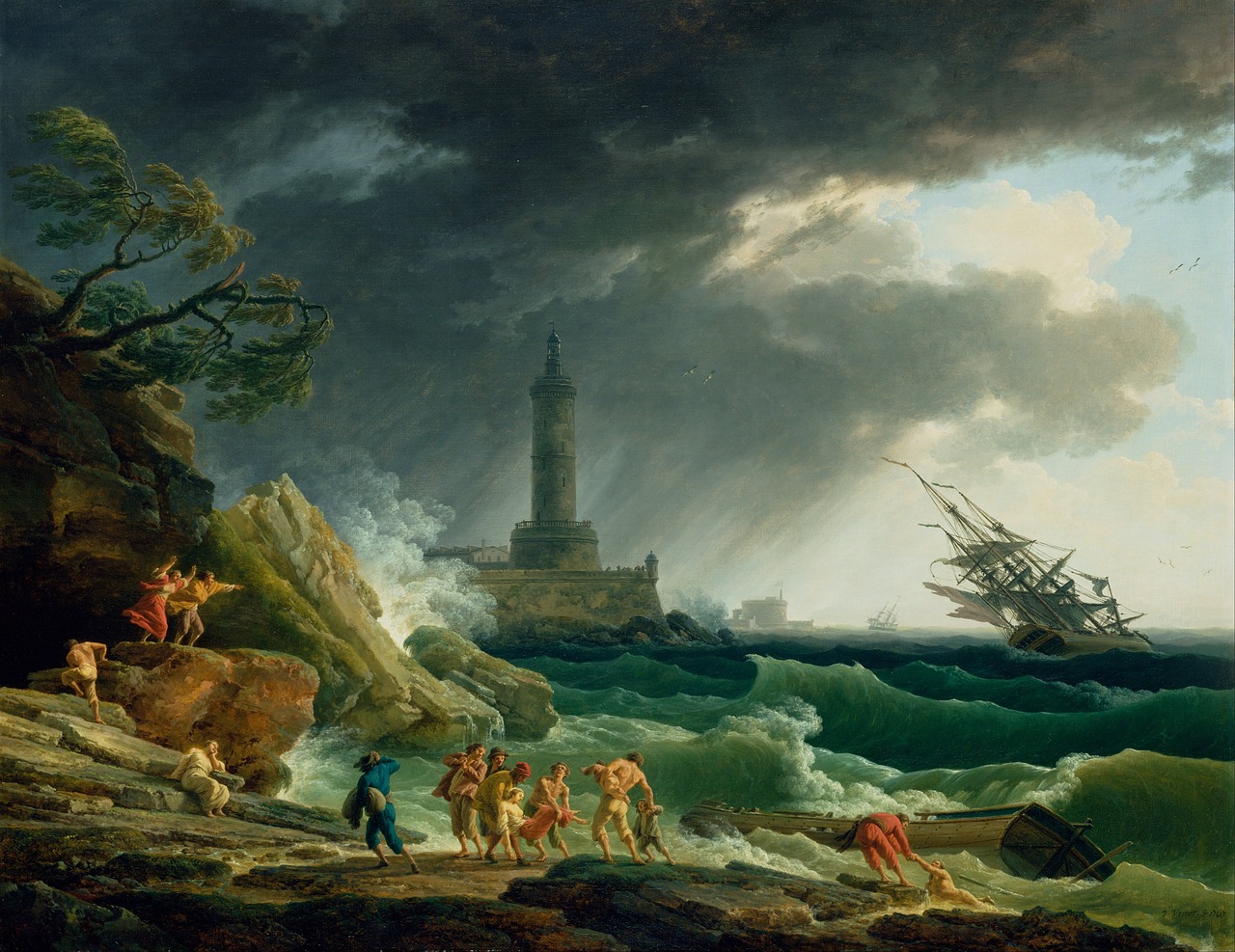
2. Claude Monet
This article explores five influential European painters, highlighting their unique styles, significant contributions to the art world, and the lasting impact they have had on both contemporary and historical art.
Vincent van Gogh, a post-impressionist painter, is renowned for his vivid colors and emotional depth. His tumultuous life and prolific output have made him a symbol of artistic genius and passion.
Claude Monet, the brilliant mind behind the Impressionist movement, transformed the world of landscape painting with his innovative techniques and a unique approach to light and color. Born in 1840 in Paris, Monet’s artistic journey was marked by a relentless pursuit of capturing the ephemeral beauty of nature. His famous series, such as the Water Lilies and Haystacks, showcase his ability to depict the same scene under different lighting conditions and seasons, inviting viewers to experience the passage of time through his brushstrokes.
Monet’s technique involved applying small, distinct strokes of color, which, when viewed from a distance, blend together to create a vibrant scene. This method not only revolutionized how we perceive landscapes but also emphasized the importance of light in painting. His works often evoke a sense of tranquility and reflection, making them timeless pieces that resonate with art lovers around the globe.
One of the most fascinating aspects of Monet's work is his ability to convey emotion through color. For instance, his use of blues and greens in his water lily paintings evokes a calming effect, while his vibrant yellows and reds in the Rouen Cathedral series capture the cathedral's grandeur and the changing effects of light throughout the day. This emotional resonance is what makes his paintings so impactful.
To better understand Monet's contributions, let's take a look at some of his most significant works in the table below:
| Painting | Year | Significance |
|---|---|---|
| Impression, Sunrise | 1872 | This painting gave the Impressionist movement its name and showcases Monet's innovative use of color and light. |
| Water Lilies | 1896-1926 | A series of approximately 250 paintings that explore the play of light on water, reflecting Monet's fascination with nature. |
| Woman with a Parasol | 1875 | This work highlights Monet's ability to capture movement and the effects of sunlight, portraying a moment of leisure. |
| Haystacks | 1890 | A series that illustrates the changing seasons and light, showcasing Monet's mastery over color and form. |
Monet's impact on the art world cannot be overstated. His dedication to capturing the fleeting moments of nature paved the way for future generations of artists. Moreover, his work inspired the Fauvism and Abstract Expressionism movements, proving that the way we see the world can be redefined through art. Even today, his influence is evident in modern art, where color and light continue to play pivotal roles.
In conclusion, Claude Monet's legacy is not just in the masterpieces he created, but in the way he changed our perception of art. His ability to see the world differently and translate that vision onto canvas invites us all to appreciate the beauty of our surroundings in a new light.
- What is Claude Monet most famous for? Monet is best known for being a founder of Impressionism and for his series of paintings like Water Lilies and Impression, Sunrise.
- How did Monet influence modern art? Monet's innovative techniques and focus on light and color paved the way for movements like Fauvism and Abstract Expressionism.
- What materials did Monet use? Monet primarily used oil paints and often painted en plein air, or outdoors, to capture the natural light and atmosphere.
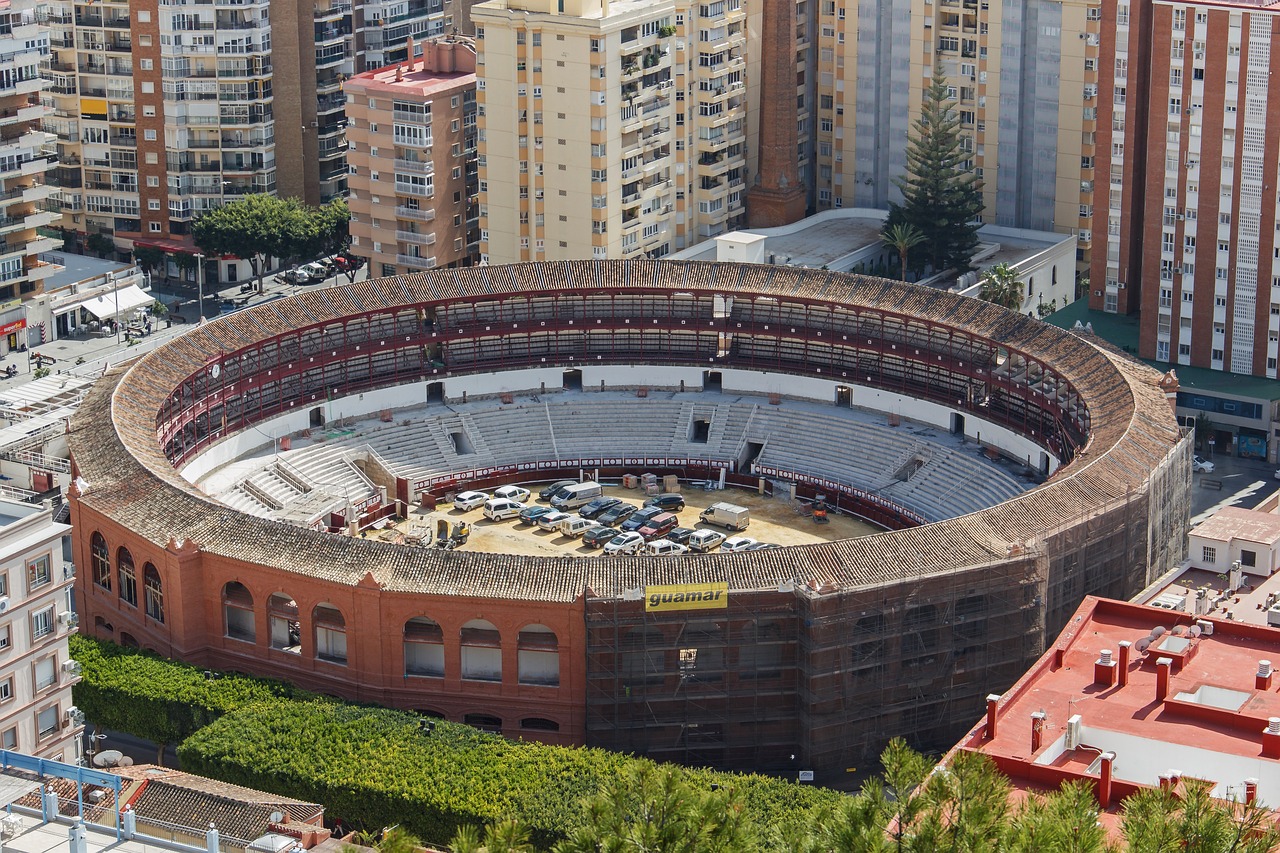
3. Pablo Picasso
Pablo Picasso, a name synonymous with artistic innovation, was a true visionary who transformed the landscape of modern art. Born in Málaga, Spain, in 1881, Picasso's journey as an artist was nothing short of extraordinary. He co-founded the Cubist movement, a revolutionary approach that shattered traditional perspectives and introduced a new way of seeing the world. Instead of depicting objects from a single viewpoint, Picasso's Cubism allowed viewers to see multiple angles simultaneously, creating a dynamic interplay of shapes and forms that challenged the norms of representation.
One of the most fascinating aspects of Picasso's work is his ability to evolve continuously. Throughout his career, he experimented with various styles, from the somber tones of his Blue Period to the vibrant colors of his Rose Period. Each phase reflects not only his personal experiences but also the broader cultural shifts of his time. For instance, the Blue Period, characterized by melancholic themes and shades of blue, was influenced by the hardships he faced, including the loss of close friends. In contrast, the Rose Period brought a sense of warmth and optimism, showcasing circus performers and lovers in a softer palette.
Picasso's impact on art extends beyond his innovative styles; he was also a master of technique. His works often combined different materials and media, such as painting, sculpture, and collage. This multidisciplinary approach not only enriched his art but also paved the way for future artists to explore new mediums. One of his most famous works, Guernica, is a powerful political statement that captures the horrors of war through a chaotic yet poignant composition. This mural-sized painting is a testament to Picasso's ability to convey deep emotions and social commentary through visual art.
Furthermore, Picasso's influence can be seen in various aspects of contemporary culture. His bold use of color and form has inspired countless artists, designers, and even filmmakers. The way he broke down and reassembled reality resonates in today’s digital art and graphic design, where boundaries continue to blur. His legacy is a reminder that art is not just about aesthetics; it's a powerful tool for expression and change.
In summary, Pablo Picasso was more than just a painter; he was a cultural icon whose work continues to inspire and provoke thought. His ability to reinvent himself and challenge artistic conventions has left an indelible mark on the art world. For anyone looking to understand the evolution of modern art, Picasso is undoubtedly a pivotal figure to explore.
- What is Picasso best known for? Picasso is best known for co-founding the Cubist movement and for his diverse range of styles throughout his career.
- What are the main periods of Picasso's work? The main periods include the Blue Period, Rose Period, African art-inspired Period, and his involvement in Cubism.
- How did Picasso influence modern art? Picasso's innovative techniques and styles challenged traditional artistic norms, paving the way for various modern art movements.

4. Rembrandt van Rijn
Rembrandt van Rijn, a name that resonates profoundly in the world of art, is often regarded as one of the greatest painters and printmakers in European history. Born in 1606 in Leiden, Netherlands, Rembrandt's journey through the art world was marked by both incredible triumphs and profound personal struggles. His ability to capture the essence of human emotion and the play of light and shadow has left an indelible mark on the canvas of art history.
What sets Rembrandt apart from his contemporaries is his extraordinary mastery of chiaroscuro, the technique of using strong contrasts between light and dark to give the illusion of volume in modeling three-dimensional objects and figures. This technique is prominently displayed in his iconic works, such as The Night Watch and The Anatomy Lesson of Dr. Nicolaes Tulp. These masterpieces not only showcase his technical prowess but also reflect his deep understanding of human psychology and emotion.
Rembrandt's portraits are particularly noteworthy. He had an uncanny ability to convey the inner lives of his subjects, transforming ordinary individuals into captivating figures that resonate with viewers even centuries later. His self-portraits, in particular, provide a fascinating glimpse into his evolving identity and emotional state throughout his life. In total, Rembrandt created over 90 self-portraits, each capturing different stages of his life, from youthful exuberance to the somber reflections of his later years.
Another aspect of Rembrandt's work that deserves attention is his exploration of biblical themes. He often depicted scenes from the Bible with a unique perspective, imbuing them with a sense of humanity that was both relatable and profound. His painting The Return of the Prodigal Son is a prime example, showcasing not just the narrative but also the deep emotional reconciliation between father and son, a theme that resonates universally.
Despite his artistic genius, Rembrandt faced significant challenges, particularly in his later years. Financial difficulties and personal losses, including the death of his beloved wife and children, took a toll on his life and work. However, these experiences only deepened the emotional resonance of his art. His later works, characterized by a more subdued palette and increased introspection, invite viewers to connect with the vulnerability and fragility of the human experience.
In summary, Rembrandt van Rijn's legacy is not just about the technical brilliance of his paintings but also about the profound emotional depth they convey. His ability to capture the human spirit in all its complexities has solidified his place as a master of art, influencing countless artists and leaving an enduring impact on the world of painting.
- What is Rembrandt's most famous painting?
His most famous painting is arguably The Night Watch, known for its dramatic use of light and shadow. - How did Rembrandt influence modern art?
Rembrandt's innovative techniques in chiaroscuro and his deep exploration of human emotion paved the way for future artists to explore similar themes. - What materials did Rembrandt use?
Rembrandt primarily used oil paints, which allowed him to achieve rich textures and vibrant colors in his works.

5. Georgia O'Keeffe
Georgia O'Keeffe is a name that resonates with the essence of American modernism. Often referred to as the "Mother of American modernism," O'Keeffe's work transcends mere representation; it embodies a profound connection between nature and abstraction. Born in 1887 in Sun Prairie, Wisconsin, she spent much of her life in the vibrant landscapes of New Mexico, which became a pivotal influence on her artistic vision. O'Keeffe’s paintings are not just visual experiences; they are emotional journeys that invite viewers to explore the depths of their own perceptions.
One of the striking features of O'Keeffe's art is her ability to magnify the ordinary into the extraordinary. Take, for instance, her iconic flower paintings. What might seem like a simple blossom transforms into a powerful statement about beauty and femininity. O'Keeffe's flowers, often depicted in large-scale, bold colors, challenge the viewer to see beyond the surface. These works are not just representations of flowers; they are explorations of form, color, and emotion. In her own words, she said, "I found I could say things with color and shapes that I couldn't say any other way—things I had no words for."
Her landscapes, too, reflect a unique blend of realism and abstraction. The vast, open skies and rugged terrains of New Mexico are captured with a sense of serenity and strength. O'Keeffe's use of color is particularly noteworthy; she often employed a palette that evokes the warmth and vibrancy of the desert. The interplay of light and shadow in her works creates a sense of depth that draws viewers in, allowing them to experience the landscape as she did. O'Keeffe once remarked, "The desert is a place of great beauty, and I want to express that beauty in my work."
O'Keeffe's contributions to the art world extend beyond her paintings. She was a trailblazer for women artists, challenging societal norms and expectations. In a time when female artists were often marginalized, O'Keeffe carved out a space for herself, becoming a symbol of strength and independence. Her legacy is not just in her art but in the inspiration she provides to countless artists, especially women, who seek to express their voices in a male-dominated field.
In summary, Georgia O'Keeffe's art is a celebration of nature, femininity, and individuality. Her ability to transform simple subjects into profound statements makes her a pivotal figure in art history. Whether through her striking floral compositions or her expansive landscapes, O'Keeffe invites us to see the world through her eyes—a world filled with beauty, emotion, and endless possibilities.
- What is Georgia O'Keeffe best known for? O'Keeffe is best known for her large-scale flower paintings and stunning desert landscapes that blend abstraction with realism.
- How did O'Keeffe influence modern art? O'Keeffe broke barriers for women in art and introduced a unique perspective that emphasized the emotional connection to nature and abstraction.
- Where can I see Georgia O'Keeffe's work? Many of her works are housed in prominent museums, including the Georgia O'Keeffe Museum in Santa Fe, New Mexico, and the Museum of Modern Art in New York City.
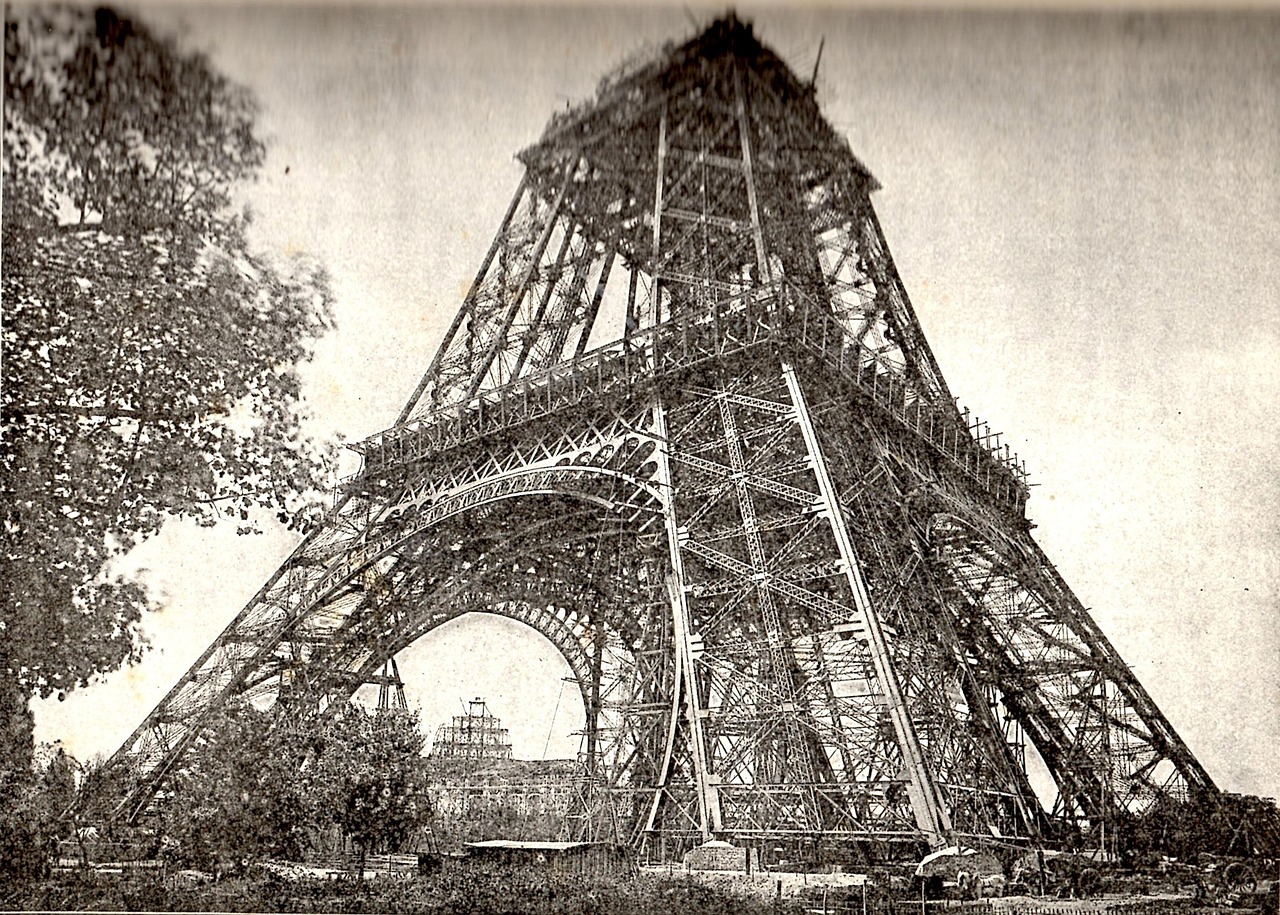
6. Gustav Klimt
Gustav Klimt, an Austrian symbolist painter, is often celebrated for his stunning and ornate artworks that shimmer with gold leaf and intricate patterns. Born in 1862, Klimt was a key figure in the Vienna Secession movement, which sought to break away from traditional artistic conventions and embrace a new style that emphasized emotion, symbolism, and decorative beauty. His most famous work, The Kiss, exemplifies his unique ability to blend sensuality with a spiritual essence, capturing the essence of love in a way that resonates deeply with viewers.
Klimt's style is characterized by a rich tapestry of colors, golden hues, and intricate details that often draw inspiration from Byzantine art and Japanese prints. His use of gold leaf is not merely decorative; it serves to elevate the subject matter, creating an ethereal quality that invites the viewer to explore deeper meanings. This technique can be seen in many of his works, where the shimmering surfaces reflect light, creating a dynamic interaction between the artwork and its environment.
Throughout his career, Klimt explored various themes, often focusing on the female form and the complexities of femininity. His portraits of women, such as Portrait of Adele Bloch-Bauer I, showcase not only his technical skill but also his fascination with the psychological depth of his subjects. Each painting tells a story, revealing layers of emotion and identity that are both personal and universal.
In addition to his portraits, Klimt's work often features allegorical and mythological themes. His murals, such as those in the University of Vienna, reflect his interest in the intersection of art, science, and philosophy. These grand compositions invite viewers to ponder profound questions about existence, knowledge, and the human experience.
Despite his fame, Klimt was a complex figure, often shying away from the public eye. His enigmatic personality is mirrored in his art, which challenges viewers to engage with the deeper meanings behind the lush visuals. Today, Klimt's influence can be seen in various forms of contemporary art, fashion, and design, proving that his legacy transcends time and continues to inspire artists around the globe.
In summary, Gustav Klimt's contributions to the art world are profound and multifaceted. His ability to blend decorative beauty with deep emotional and psychological insights has left a lasting impact on both historical and contemporary art. As we continue to explore the realms of art and creativity, Klimt's works remind us of the power of beauty, love, and the human spirit.
- What is Gustav Klimt most famous for?
Klimt is best known for his luxurious and ornate paintings, particularly The Kiss and Portrait of Adele Bloch-Bauer I. - What art movement did Klimt belong to?
He was a prominent figure in the Vienna Secession movement, which sought to innovate and break away from traditional art forms. - What themes did Klimt often explore in his art?
Klimt frequently explored themes of love, femininity, and the human experience, often depicting women in complex emotional states. - How did Klimt use gold in his paintings?
Klimt used gold leaf to enhance the decorative quality of his works, creating an ethereal effect that draws viewers in and adds depth to his subjects.

7. Henri Matisse
Henri Matisse, often hailed as one of the most significant figures in modern art, is renowned for his vibrant use of color and innovative forms. Born in 1869 in Le Cateau-Cambrésis, France, Matisse's journey into the world of art began as a law student, but his passion quickly led him to pursue painting. His works are characterized by a boldness that challenges traditional artistic conventions, making him a leading figure of the Fauvism movement, which celebrated color as a means of expression rather than a mere representation of reality.
What sets Matisse apart is his ability to evoke emotion through color. Imagine walking into a room filled with his paintings; the colors leap off the canvas, enveloping you in a warm embrace. Matisse believed that color could convey feelings much more powerfully than form or line. This philosophy is evident in masterpieces like The Joy of Life and The Dance, where the vibrant hues create a sense of movement and joy.
Throughout his career, Matisse experimented with various styles and techniques, but his love for color remained a constant. He often used complementary colors to create dynamic contrasts that draw the viewer's eye and elicit emotional responses. His work is not just about what is seen but also about what is felt. In fact, Matisse once said, "What characterized fauvism was that we rejected the idea of color as a means of describing nature." This revolutionary approach paved the way for future artists to explore color in ways that had never been done before.
As Matisse matured as an artist, he began to explore the concept of cut-outs, a technique where he would cut shapes from painted paper and arrange them into compositions. This innovative method allowed him to create a new form of art that was both abstract and colorful. Works like The Snail exemplify this technique, showcasing how Matisse transformed simple shapes into a breathtaking visual experience. His cut-outs, created later in life, reveal a playful yet profound approach to art that continues to inspire artists today.
Henri Matisse's legacy is not just in his artworks but also in the way he challenged the norms of his time. He believed that art should be a source of joy and inspiration, and his work reflects this philosophy. Today, Matisse's influence can be seen in various art movements and among countless contemporary artists who draw inspiration from his fearless use of color and form. He reminds us that art is not only about technique but also about the emotions it evokes and the joy it brings to our lives.
- What is Henri Matisse best known for?
Matisse is best known for his use of vibrant color and his role in the Fauvism movement, as well as his innovative cut-out technique. - How did Matisse influence modern art?
His bold use of color and departure from traditional forms paved the way for future movements, encouraging artists to explore color and abstraction. - What are some of Matisse's most famous works?
Some of his most notable works include The Joy of Life, The Dance, and The Snail.
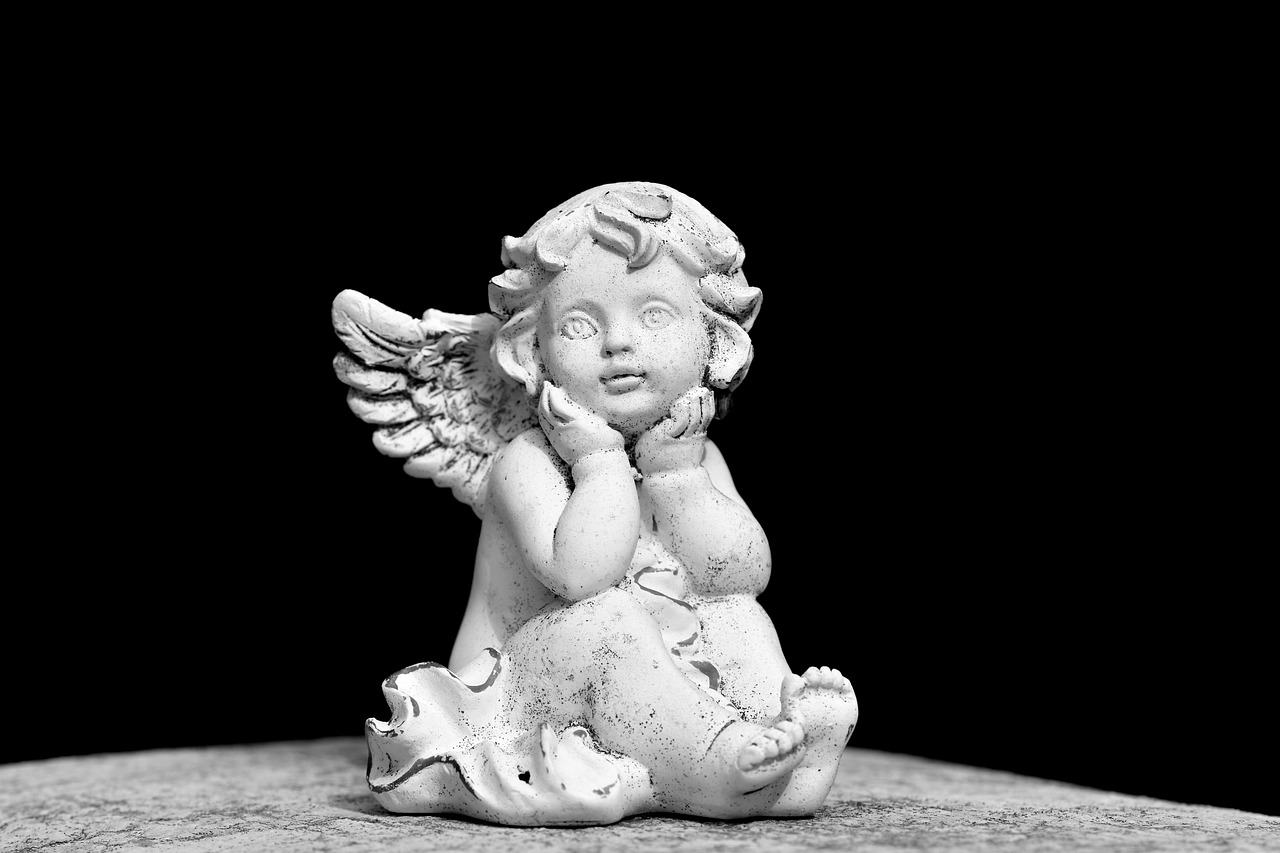
8. Michelangelo Buonarroti
Michelangelo Buonarroti, often simply known as Michelangelo, is one of the most revered figures in the history of art. Born in 1475 in Caprese, Italy, he was not just a painter; he was also a sculptor, architect, and poet. His multifaceted talents allowed him to leave an indelible mark on the Renaissance era, and his works are still celebrated today for their emotional depth and technical prowess.
One of Michelangelo's most famous works is the ceiling of the Sistine Chapel in Vatican City. Commissioned by Pope Julius II, this monumental project took four years to complete, from 1508 to 1512. The ceiling features a series of stunning frescoes that depict scenes from the Book of Genesis, including the iconic Creation of Adam, where God reaches out to give life to Adam. This painting alone is a testament to Michelangelo's ability to convey profound human emotion and divine beauty through his art.
Michelangelo's approach to sculpture is equally impressive. His most renowned piece, the David, stands at an imposing 17 feet tall and captures the biblical hero in a moment of contemplation before facing Goliath. The level of detail in David's anatomy showcases Michelangelo's deep understanding of the human form, which he studied extensively through dissections. This work is often hailed as a pinnacle of Renaissance sculpture, representing not just physical beauty but also the intellectual and emotional depth of its subject.
In addition to his masterpieces in painting and sculpture, Michelangelo also made significant contributions to architecture. He played a crucial role in the design of St. Peter's Basilica in Vatican City, influencing its overall structure and aesthetics. His vision helped transform the basilica into one of the most magnificent churches in the world, further solidifying his legacy as a master of Renaissance art.
Michelangelo's artistic journey was not without its challenges. He often clashed with patrons and faced immense pressure to conform to their expectations. However, his unwavering commitment to his vision and his relentless pursuit of perfection set him apart from his contemporaries. His works resonate with a raw energy and emotional intensity that continue to captivate audiences, making him a timeless figure in the art world.
In summary, Michelangelo Buonarroti's contributions to art are vast and varied. His ability to blend technical skill with profound emotional expression has ensured his place as a giant in the history of Western art. Whether through the sweeping grandeur of the Sistine Chapel or the intimate beauty of his sculptures, Michelangelo's work remains a source of inspiration for artists and art lovers alike.
- What are Michelangelo's most famous works? Michelangelo is best known for the Sistine Chapel ceiling, the statue of David, and the Pietà.
- What style of art did Michelangelo represent? He is primarily associated with the Renaissance style, which emphasizes humanism, proportion, and the beauty of the human form.
- Did Michelangelo work on architecture? Yes, Michelangelo was also an accomplished architect, most notably involved in the design of St. Peter's Basilica.
- How did Michelangelo influence future artists? His mastery of anatomy and emotional depth in his works set a standard that many artists strive to achieve even today.
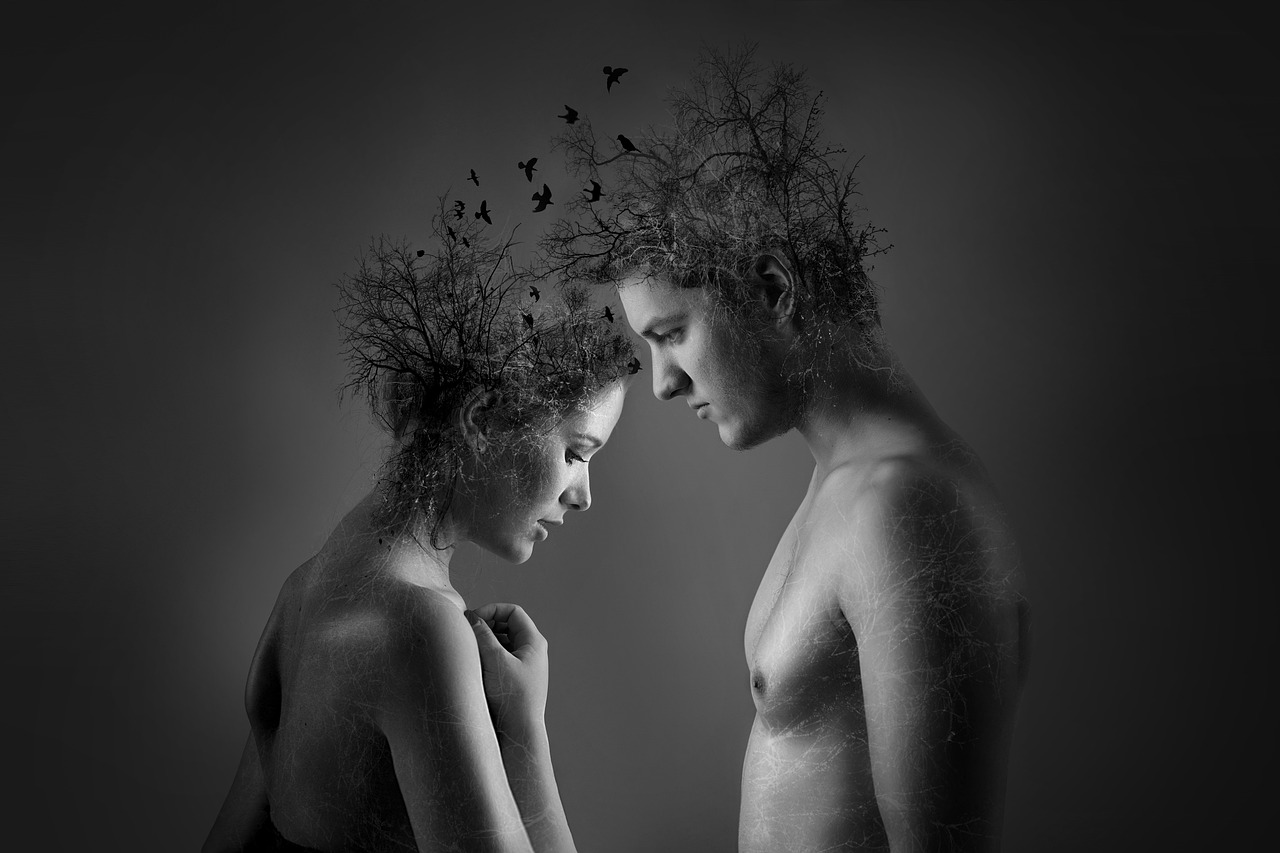
9. Salvador Dalí
When you think of surrealism, the name Salvador Dalí likely pops into your mind almost immediately. This Spanish artist was not just a painter; he was a visionary who challenged the very fabric of reality through his art. Born in 1904 in Figueres, Catalonia, Dalí's eccentric personality matched the bizarre and dreamlike quality of his work. His paintings are a kaleidoscope of imagination, filled with melting clocks, distorted figures, and landscapes that seem to defy the laws of physics. One can't help but feel a sense of wonder and curiosity when gazing at his masterpieces.
Dalí's unique style was a fusion of meticulous realism and surrealist elements, creating a visual language that was all his own. He once stated, "The only difference between me and a madman is that I am not mad." This quote encapsulates his approach to art and life, blurring the lines between sanity and insanity, reality and dreams. His most famous work, The Persistence of Memory, features soft, melting clocks draped over a desolate landscape, symbolizing the fluidity of time and the subconscious mind. It's a painting that invites viewers to question their perceptions and interpretations of reality.
Dalí's art was not confined to canvases alone; he explored various mediums, including sculpture, film, and photography. He collaborated with renowned filmmakers like Alfred Hitchcock and created iconic scenes that still resonate in popular culture today. His flamboyant persona, complete with a trademark mustache and theatrical flair, made him a celebrity in his own right. He understood that art was not just about the work itself but also about the persona behind it.
One of the fascinating aspects of Dalí's work is his use of symbolism. His paintings are often filled with recurring motifs, such as ants, eggs, and crutches, each carrying deeper meanings. For instance, ants symbolize decay and death, while eggs represent hope and the potential for life. By incorporating these symbols, Dalí invites viewers to delve deeper into the psychological and emotional layers of his art.
Dalí's influence extends far beyond the art world. His ideas and imagery have permeated literature, fashion, and even advertising. He was a master of self-promotion, using his eccentricities to captivate audiences and ensure that his work remained in the public eye. Today, his legacy lives on, inspiring countless artists and dreamers who seek to explore the boundaries of reality through their creativity.
- What is Salvador Dalí best known for?
Dalí is best known for his surrealist paintings, particularly The Persistence of Memory, which features melting clocks and dreamlike landscapes. - What influenced Dalí's art?
Dalí was influenced by various movements, including Impressionism and Cubism, but he is primarily associated with Surrealism, which explores the unconscious mind and dream imagery. - Did Dalí work in other mediums besides painting?
Yes, Dalí worked in various mediums, including sculpture, film, photography, and even fashion design, showcasing his versatility as an artist. - How did Dalí's personality affect his art?
Dalí's eccentric personality and flamboyant style contributed to his art, as he often incorporated his unique perspective on life and reality into his work.
Frequently Asked Questions
- Who was Vincent van Gogh and what are his most famous works?
Vincent van Gogh was a post-impressionist painter known for his vibrant colors and emotional depth. His most famous works include "Starry Night," "Sunflowers," and "The Bedroom." His unique style and passionate approach to painting have made him a symbol of artistic genius, even though he struggled with mental health issues throughout his life.
- What makes Claude Monet a significant figure in art history?
Claude Monet is a pivotal figure in the Impressionist movement, renowned for his innovative use of light and color. His works, such as "Impression, Sunrise" and "Water Lilies," revolutionized landscape painting by capturing the transient effects of light on nature. Monet's ability to evoke emotion and tranquility through his brushwork continues to inspire artists today.
- How did Pablo Picasso influence modern art?
Pablo Picasso co-founded the Cubist movement and is celebrated for his groundbreaking styles and techniques. His diverse body of work, including pieces like "Les Demoiselles d'Avignon" and "Guernica," challenged traditional artistic conventions and introduced new ways of seeing and interpreting art. Picasso's influence is profound, shaping the direction of 20th-century art and culture.
- What is Rembrandt van Rijn known for?
Rembrandt van Rijn is known for his extraordinary skill in capturing human emotion and light. His mastery of chiaroscuro—the contrast between light and dark—can be seen in works like "The Night Watch" and his numerous self-portraits. His ability to convey depth and narrative through his portraits and biblical scenes has cemented his legacy as one of the greatest painters in history.
- What are the key characteristics of Georgia O'Keeffe's artwork?
Georgia O'Keeffe is famous for her large-scale flower paintings and striking desert landscapes. Her work embodies a unique blend of abstraction and realism, often focusing on natural forms and colors. O'Keeffe's ability to transform everyday subjects into powerful visual statements has made her a significant figure in American art and a source of inspiration for many contemporary artists.
- What themes did Gustav Klimt explore in his art?
Gustav Klimt is best known for his ornate, gold-leaf artworks that often explore themes of love, death, and femininity. His most famous piece, "The Kiss," exemplifies his intricate style and rich symbolism. Klimt's exploration of the human experience through his unique visual language has left a lasting impact on the art world, influencing generations of artists.
- How did Henri Matisse contribute to the Fauvism movement?
Henri Matisse was a leading figure of Fauvism, recognized for his bold use of color and innovative forms. His works, such as "Woman with a Hat" and "The Dance," challenge traditional artistic conventions, celebrating the beauty of color and expression. Matisse's emphasis on emotional resonance over realistic representation has had a lasting influence on modern art.
- What are Michelangelo Buonarroti's most notable achievements?
Michelangelo Buonarroti is celebrated for his mastery in both sculpture and painting, with notable achievements including the iconic "David" and the breathtaking Sistine Chapel ceiling. His ability to convey human emotion through form and composition is unparalleled, and his work remains a cornerstone of Renaissance art, inspiring countless artists throughout history.
- What is the significance of Salvador Dalí in the surrealist movement?
Salvador Dalí is a prominent figure in the surrealist movement, known for his dreamlike imagery and eccentric personality. His innovative techniques, such as the use of double images and bizarre landscapes, challenge perceptions of reality. Works like "The Persistence of Memory" provoke thought and inspire creativity, making Dalí a lasting influence in the art community.



















